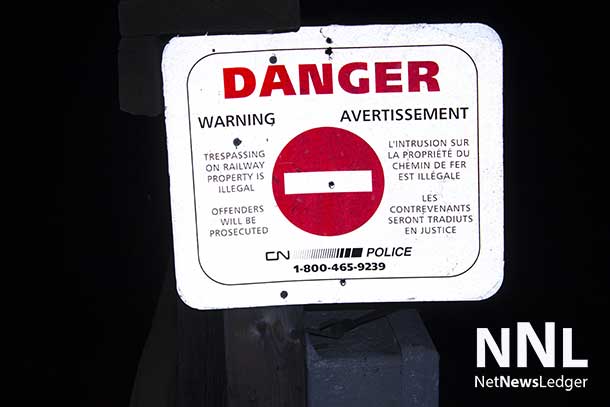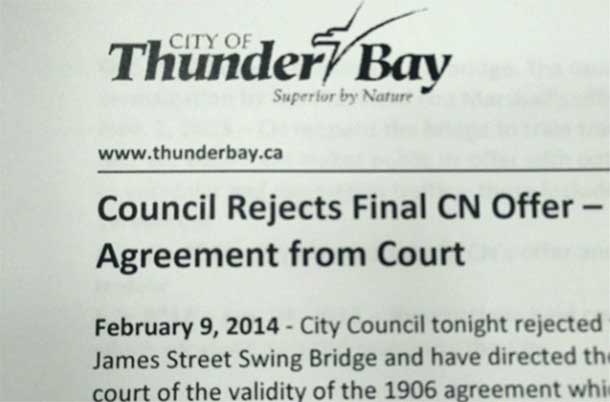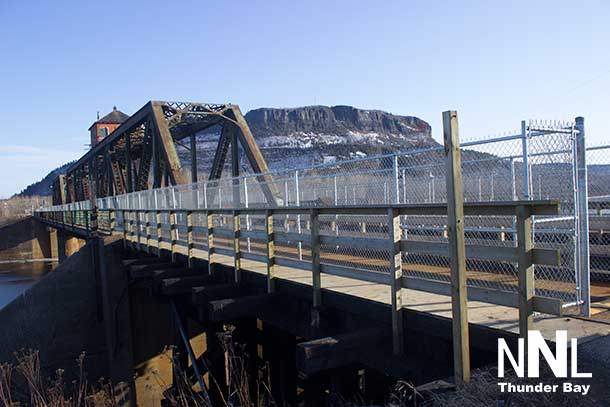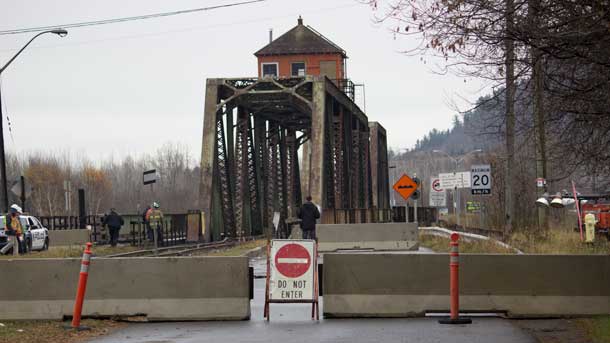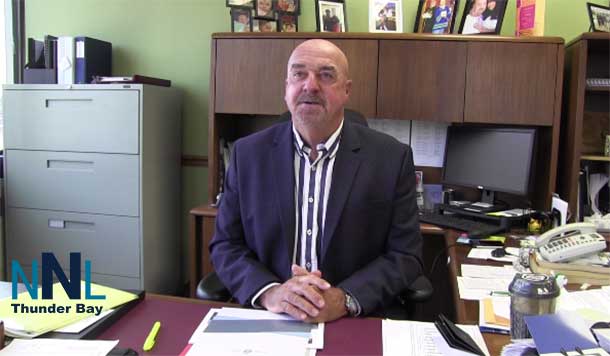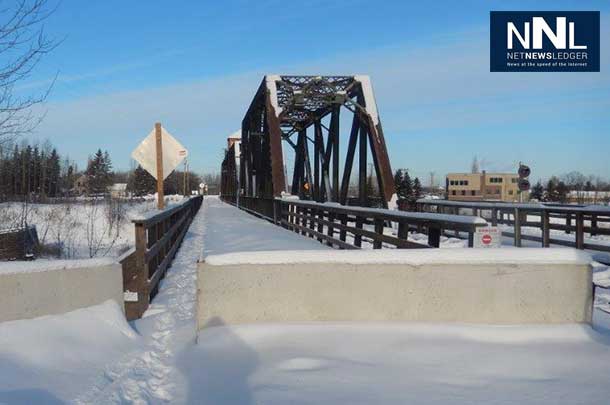
THUNDER BAY – Thunder Bay City Council has rejected CN Rail’s offer on the James Street Bridge. Speaking on the offer, Thunder Bay Mayor Keith Hobbs said at Council, “It’s a bad deal offered in bad faith”.
Part of CN’s offer to Thunder Bay would require Fort William First Nation to surrender land rights which is not an area that the City of Thunder Bay would have any jurisdiction over.
City Council have directed the City Solicitor to now seek confirmation from the court of the validity of the 1906 agreement which requires CN to maintain the bridge in perpetuity.
The decision follows a thorough review by City Administration and Council of CN’s offer of Jan. 23, 2015. CN proposed to permanently limit the bridge to alternating one-way traffic, a measure generally used on a temporary basis for construction zones (eg. bridges). As well, the City would have to “surrender” the 1906 agreement and Fort William First Nation would have to agree to give up its current and future rights in any land claims process.
“Frankly in our view, it’s a bad deal offered in bad faith,” said Mayor Keith Hobbs. “Let’s be absolutely clear. CN owns the James Street Swing Bridge, and is trying to buy its way out of the 1906 agreement with an option that is unworkable as a long-term solution. First and foremost, the proposal does not provide an acceptable, long-term solution for vehicular flow and traffic safety, and it attempts to transfer much of the liability of the bridge and responsibility for maintenance from CN to the City.
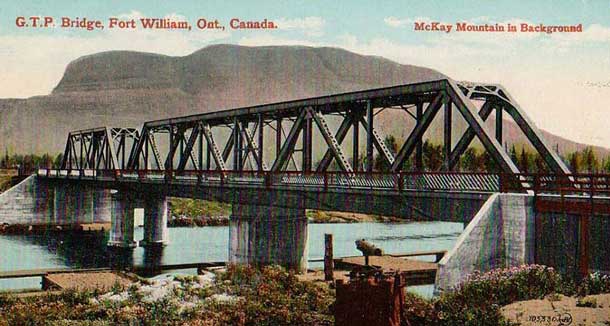
In 1906, CN agreed to build the bridge between the then Town of Fort William and Fort William First Nation. Now in 2015, CN wants the citizens of Thunder Bay to assume the responsibility for vehicular use of a 100-year-old bridge and maintain it in perpetuity. As well, it is unconscionable that CN is trying to use the City’s interest in having the bridge re-opened to traffic as leverage to require Fort William First Nation to give up all its inherent rights.”
CN and the Government of Canada have offered up to $3 million towards construction. However, CN has denied the City access to any Engineering studies to assess the condition of the bridge or the breakdown of capital costs. There is no way to confirm that the construction cost will be held at $3 million, and that there would be no cost to the City.
It is also likely, during an election year on Fort William First Nation to be an issue that would be supported on the First Nation.
From the time that the bridge burned, CN Rail moved fast to protect its ability to get trains across the bridge, but has not moved toward allowing vehicles or pedestrian traffic.
Repeatedly, Mayor Hobbs has called the rail company a bad corporate citizen.
On Fort William First Nation, and in Thunder Bay the bridge closure has had a serious impact on commerce. Businesses in Westfort have been impacted, as have businesses on Fort William First Nation.
Additionally, when there have been accidents on the First Nation travel by EMS and Fire Rescue has taken far longer.
There are unconfirmed reports that the bridge closure has also impacted visitor numbers at Chippewa Park.
The issue appears headed either to legal action, or toward building a new bridge to replace the James Street Bridge.
The effort by CN Rail on the issue of Fort William First Nation claiming the railway is trespassing could be given added weight with the company’s demand on giving up its rights to the land.
Key Facts
March 29, 1905 – Town of Fort William and Grand Trunk Pacific Railway enter an agreement to make Thunder Bay a major western terminus of operations
March 28, 1906 – Town of Fort William and Grand Trunk Pacific Railway Company execute an agreement pertaining to the construction of the bridge, which includes the stipulation that Grand Trunk – which subsequently became CN – is responsible to “maintain the bridge in perpetuity”
Oct. 24, 2013 – City offers to cooperate with CN on a structural assessment of the bridge [no response has been forthcoming from CN]
Oct. 29, 2013 – Fire damages the bridge. The cause of the fire remains unknown, and remains under investigation by the Provincial Fire Marshall’s office.
Nov. 1, 2013 – CN reopens the bridge to train traffic only. It remains closed to vehicular traffic.
July 15, 2014 – CN makes public its offer with options and conditions to open the bridge within weeks to vehicular and pedestrian traffic – these include a full and final release of CN from the 1906 agreement
July 21, 2014 – City Council rejects CN’s offer and commits to a more detailed and broader legal review
July 2014 – Jan. 23, 2015 – Negotiations held confidentially, resulting in two, draft written CN offers which received detailed review by the City
